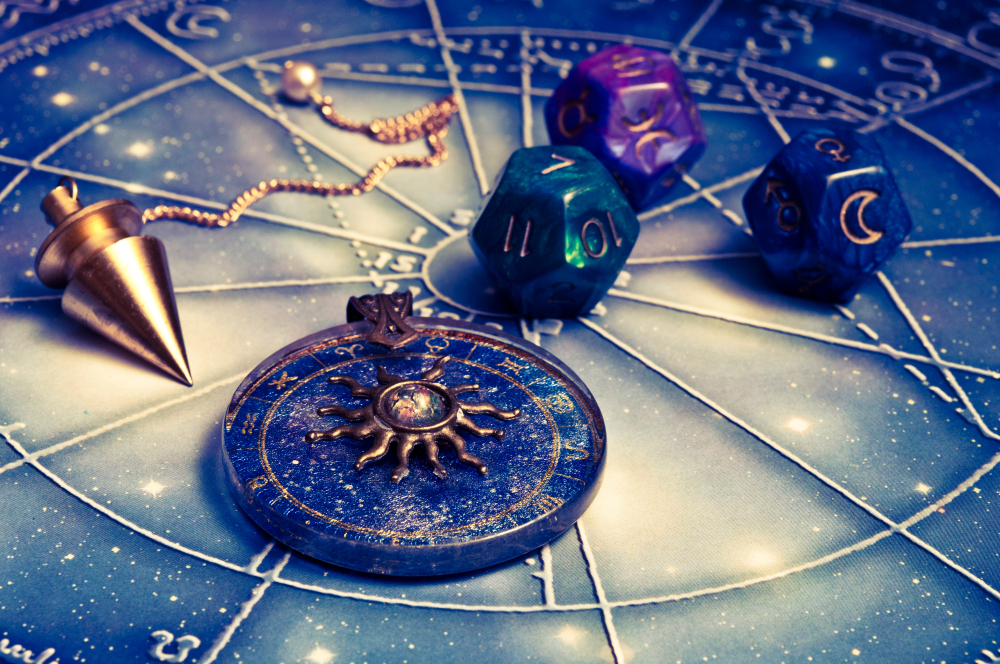
Modern astrology is much more than horoscopes and zodiac signs. The divination practice is more sophisticated than what is seen at first glance, involving complicated astronomical and mathematical methods. Other techniques provide more details to help astrologers interpret a person’s natal chart. Decans, a concept that’s existed since ancient Egypt, offer more clues to an individual’s personality.
Modern Astrology and the Tropical Zodiac
The Western zodiac is comprised of 12 signs based on constellations mapped to our planet’s ecliptic plane, an imaginary flat circle that represents its path around the sun. From Earth, the sun appears to move through the sky and these constellations. Most Western astrology uses the tropical year, based on our four seasons and beginning with the first day of Aries on the spring equinox. During the second century, Greek astronomers defined the tropical zodiac by dividing it into 12 equal 30-degree segments and setting its starting point at zero degrees Aries.
Decans in Ancient Egypt and Modern Astrology
The Encyclopedia Britannica mentions that the ancient Egyptians used an astronomical unit of measurement known as a decan. Every decan was assigned to one of 36 star configurations that circled the sky slightly south of the ecliptic. Decans also played an important part in how the Egyptians measured time. An Egyptian year lasted 365 days, consisting of 36 decans lasting for 10 days each plus an additional five-day period.
Astrodienst Astrowiki explains that contemporary astrology divides each zodiac sign into three decans of 10 degrees each. Just as every sign is ruled by a different celestial body, decans have unique planetary rulers. For instance, Leo as a whole is ruled by the sun. However, someone born on July 31 will have a different decan ruler than an individual born on August 14. With the sun moving almost one degree per day, each decan lasts roughly 10 days.
Determining a Decan’s Planetary Ruler
Two different systems are used to determine each decan’s planetary ruler. Both Astrodienst and the Astrology Dictionary mention the Chaldean method, documented by 17th-century English astrologer William Lilly. Satori Shala mentions that Chaldeans ranked the seven visible planets by how fast or slow they moved through the sky. Each planet was assigned a stage, with slow-moving Saturn first and the moon last. The Chaldean system starts with Mars ruling the first decan of Aries, then uses the Chaldean planetary order to assign the remaining decans in the other signs.
In contrast, the triplicity method relies on each sign’s native element to define its decans’ planetary rulers. This system also places Mars as Aries’s first decan ruler but then uses the next fire signs’ rulers for the second and third decans: in this case, the sun and Jupiter, since they rule Leo and Sagittarius respectively.
What’s the Big Deal With Decans?
A person’s zodiac sun sign represents the ego and basic personality. But to an astrologer, decans add more layers of interpretation. The first decan’s ruler is the same as the sign itself in the triplicity system, which can intensify the sign’s core traits. With people born in the second or third decan, planetary rulers color their basic personalities differently. Ruled by Mars, a first decan Aries may be even more impulsive. A second decan Aries could have a more regal air with Leo’s ruling sun, while a Jupiter-ruled third decan Aries may seem more adventurous and less conventional.
Astrology has its enthusiasts and detractors, but there’s no doubt about the intricacy of its techniques. The use of decans proves that point abundantly by helping astrologers see additional nuances in an individual’s personality. You probably won’t find these in your daily online horoscope, but they offer opportunities for an in-depth study into an already fascinating practice.

